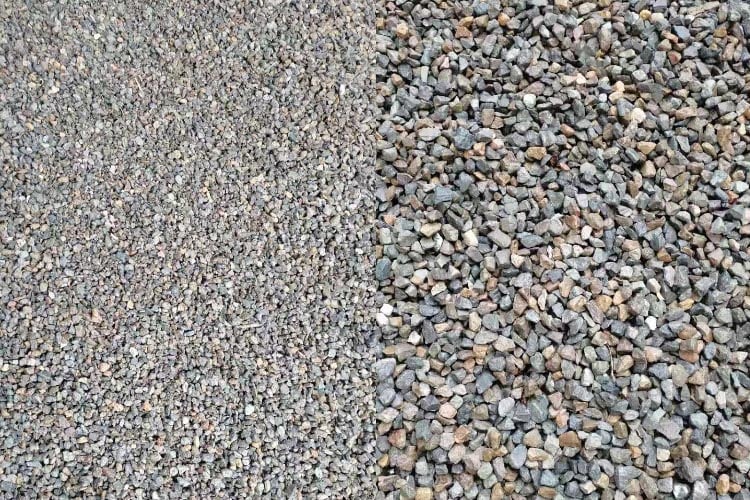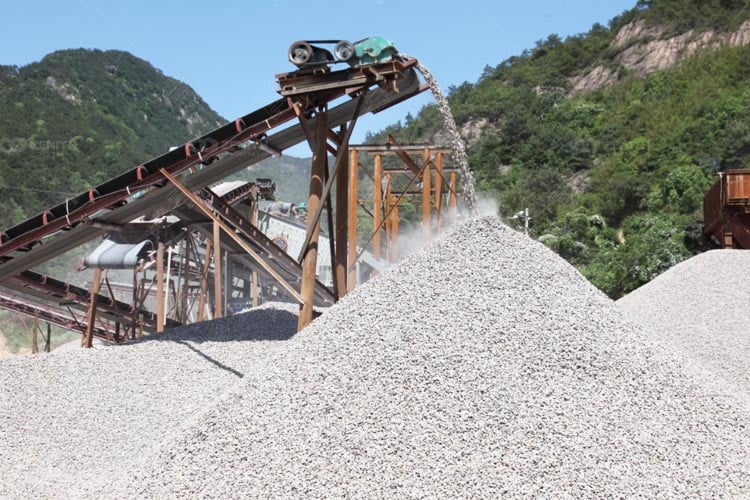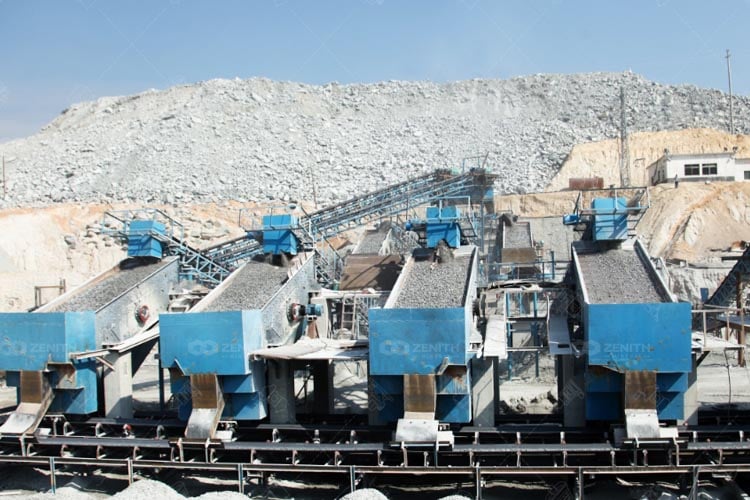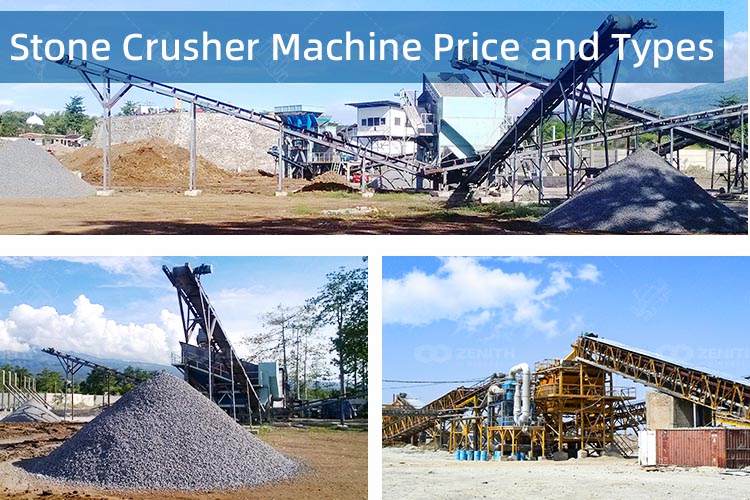Crushed stone and gravel are two popular materials used for landscaping and construction projects. They both have unique properties and uses, and understanding these differences is important for selecting the right material for your project. In this guide, we will provide a complete overview of crushed stone and gravel, including their characteristics, uses, and benefits.

Crushed stone is a type of construction aggregate that is typically produced by mining a suitable rock deposit and breaking the removed rock down to the desired size using crushers. It is a popular material for use in construction projects, including roads, bridges, buildings, and landscaping.

Crushed stone is made from rocks that have been broken down by machines, such as crushers and screeners. It is typically composed of a combination of rock materials, including limestone, granite, trap rock, and gneiss. The size of the crushed stone is determined by the size of the stones that are fed into the crushing machines. The most common sizes for crushed stone are:
1/4” to 3/8”
3/8” to 1/2”
1/2” to 3/4”
3/4” to 1”
Crushed stone is available in a variety of colors and textures, depending on the quarry where it was sourced. Some common colors include white, gray, and red. Crushed stone can also be angular or rounded, depending on the shape of the stones that were used.
The process of producing crushed stone typically involves several stages:
Mining: The first step in producing crushed stone is to mine a suitable rock deposit. The rock is typically blasted and then transported to a processing plant.
Primary Crushing: The mined rock is crushed to the desired size using a primary crusher. The crusher reduces the size of the rock by breaking it into smaller pieces.

Secondary Crushing: The crushed rock is then further reduced in size using a secondary crusher. This process helps to produce a more uniform size of crushed stone.
Screening: After the crushing process is complete, the crushed stone is screened to separate the different sizes of stone. This is typically done using a vibrating screen.

Washing: Some crushed stone may require washing to remove any fine particles that may be present.
Stockpiling: The final step in the process is to stockpile the crushed stone. This allows for easy access to the material when it is needed for use in construction projects.
Once the crushed stone has been produced and stockpiled, it can be used in a variety of construction projects. Some common uses of crushed stone include:
Road construction: Crushed stone is often used as a base material for roads and highways. It provides a stable foundation that can withstand heavy traffic.
Building construction: Crushed stone is used in the construction of buildings as a base material for foundations, walls, and floors.
Landscaping: Crushed stone is commonly used in landscaping projects, such as creating pathways, garden beds, and retaining walls.
Drainage: Crushed stone is also commonly used in drainage projects, such as creating a base for drainage systems or as a filler material in French drains.
Overall, the process of producing crushed stone involves several stages and can be used in a wide range of construction and landscaping projects.
Gravel is a type of construction aggregate that is made up of naturally occurring rock fragments. These rock fragments are typically smaller than those found in crushed stone and are rounded in shape. Gravel is commonly used in construction projects, including roads, bridges, buildings, and landscaping.
Gravel can be found in a variety of sizes, from small pebbles to large rocks. The most common sizes for gravel are:
Pea gravel (1/4”)
Small gravel (1/2” to 1”)
Medium gravel (1” to 2”)
Large gravel (2” to 4”)
Like crushed stone, gravel is available in a variety of colors and textures, depending on the quarry where it was sourced. Some common colors include brown, gray, and white. Gravel can also be angular or rounded, depending on the shape of the stones that were used.
There are several types of gravel that are commonly used in construction projects, including:
Pea gravel: This type of gravel is made up of small, rounded rocks that are roughly the size of a pea. It is commonly used in landscaping projects, such as creating paths or garden beds.
River rock gravel: This type of gravel is made up of larger, rounded rocks that are typically found in river beds. It is commonly used in landscaping projects, such as creating water features or decorative rock gardens.
Crushed granite gravel: This type of gravel is made up of crushed granite that has been screened to remove any larger pieces. It is commonly used as a base material for roads and highways.
Crushed limestone gravel: This type of gravel is made up of crushed limestone that has been screened to remove any larger pieces. It is commonly used as a base material for driveways and parking lots.
Crushed recycled concrete gravel: This type of gravel is made up of crushed concrete that has been screened to remove any larger pieces. It is commonly used as a base material for roads and highways.
Sand and gravel mix: This type of gravel is made up of a mixture of sand and small rocks. It is commonly used in construction projects, such as creating a base for concrete or asphalt.
Fine gravel: This type of gravel is made up of smaller rock fragments that are roughly the size of a grain of sand. It is commonly used as a filler material in landscaping projects.
Overall, there are many different types of gravel that are commonly used in construction and landscaping projects. The type of gravel that is used will depend on the specific needs of the project and the characteristics of the site where the project is being constructed.
There are many benefits to using crushed stone in landscaping and construction projects, including:
Durability: Crushed stone is a durable material that can withstand heavy use and traffic. It is also resistant to erosion and weathering, making it ideal for outdoor applications.
Versatility: Crushed stone comes in a variety of sizes, colors, and textures, making it a versatile material for a range of landscaping and construction projects.
Drainage: Crushed stone provides good drainage, which can help prevent flooding and erosion.
Cost-effective: Crushed stone is an affordable material that can be used in place of more expensive materials, such as concrete or asphalt.
Environmentally friendly: Crushed stone is a natural material that can be sourced locally, reducing the need for transportation and minimizing environmental impact.
Gravel also offers several benefits for landscaping and construction projects, including:
Durability: Gravel is a durable material that can withstand heavy use and traffic. It is also resistant to erosion and weathering, making it ideal for outdoor applications.
Versatility: Gravel comes in a variety of sizes and colors, making it a versatile material for a range of landscaping and construction projects.
Drainage: Gravel provides good drainage, which can help prevent flooding and erosion.
Cost-effective: Gravel is an affordable material that can be used in place of more expensive materials, such as concrete or asphalt.
Environmentally friendly: Gravel is a natural material that can be sourced locally, reducing the need for transportation and minimizing environmental impact.
In practical engineering projects, choosing crushed stone and gravel to maximize service life needs to consider the following factors:
1. Select suitable particle size according to project needs. It is necessary to consider both construction convenience and use function, and select an appropriate particle size to maximize strength and durability. Cobblestone usually uses finer particle size, while gravel uses medium or coarser particle size.
2. Choose high-quality stone materials. Using rock species with higher density and durability, such as granite and sandstone, can obtain higher strength and longer life.
3. Appropriately increase construction density. Careful compaction can effectively reduce voids in materials, increase overall strength and extend service life. But it should be balanced with construction ease.
4. Prevent environmental damage. Choosing a good environment for construction can maximize avoid aging and damage of materials. Pay attention to protective measures in harsh environments.
5. Regular inspections and maintenance. Timely inspection of road surfaces and foundations and timely repair, patching and supplementation of new fill can effectively maintain use function and extend service life.
6. Reasonably carry out reconstruction. At the end of service life, reconstruction should be carried out according to actual conditions. Old and deteriorated materials should be cleared and new road subgrade or foundation rebuilt to restore service life. Early reconstruction can maximize avoid project function obstacles.
In summary, in practical engineering construction, choosing high-quality rock materials, controlling appropriate particle size, reasonable density, suitable environment for construction, regular maintenance and inspection and reasonable reconstruction when needed are key to extending the service life of crushed stone and gravel.
Crushed stone and gravel are two popular materials used for landscaping and construction projects. Both materials offer several benefits, including durability, versatility, good drainage, affordability, and environmental friendliness. Understanding the differences between these materials and their characteristics, uses, and benefits can help you select the right material for your project. Whether you are creating a driveway, pathway, landscaping feature, or construction project, crushed stone and gravel can provide a durable and attractive solution.

the front of the production line adopts jaw crusher + desilting screening + pre-screening + cone crusher + vertical shaft impact crusher for shaping+ finished product screening, the back of the production line adopts tower-like sand making process.

There are many types of stone crusher machines on the market. In this article, we will introduce the types and price of the stone crusher and how to select the most suitable one.

With the construction of high-speed railways, highways, nuclear power plants, and super high-rise buildings, ordinary sand and gravel aggregates can no longer meet the raw material needs of high-performance concrete.
Fill your requirements here, and we'll send the custmized solution and quotation to you by the reserved contact information.